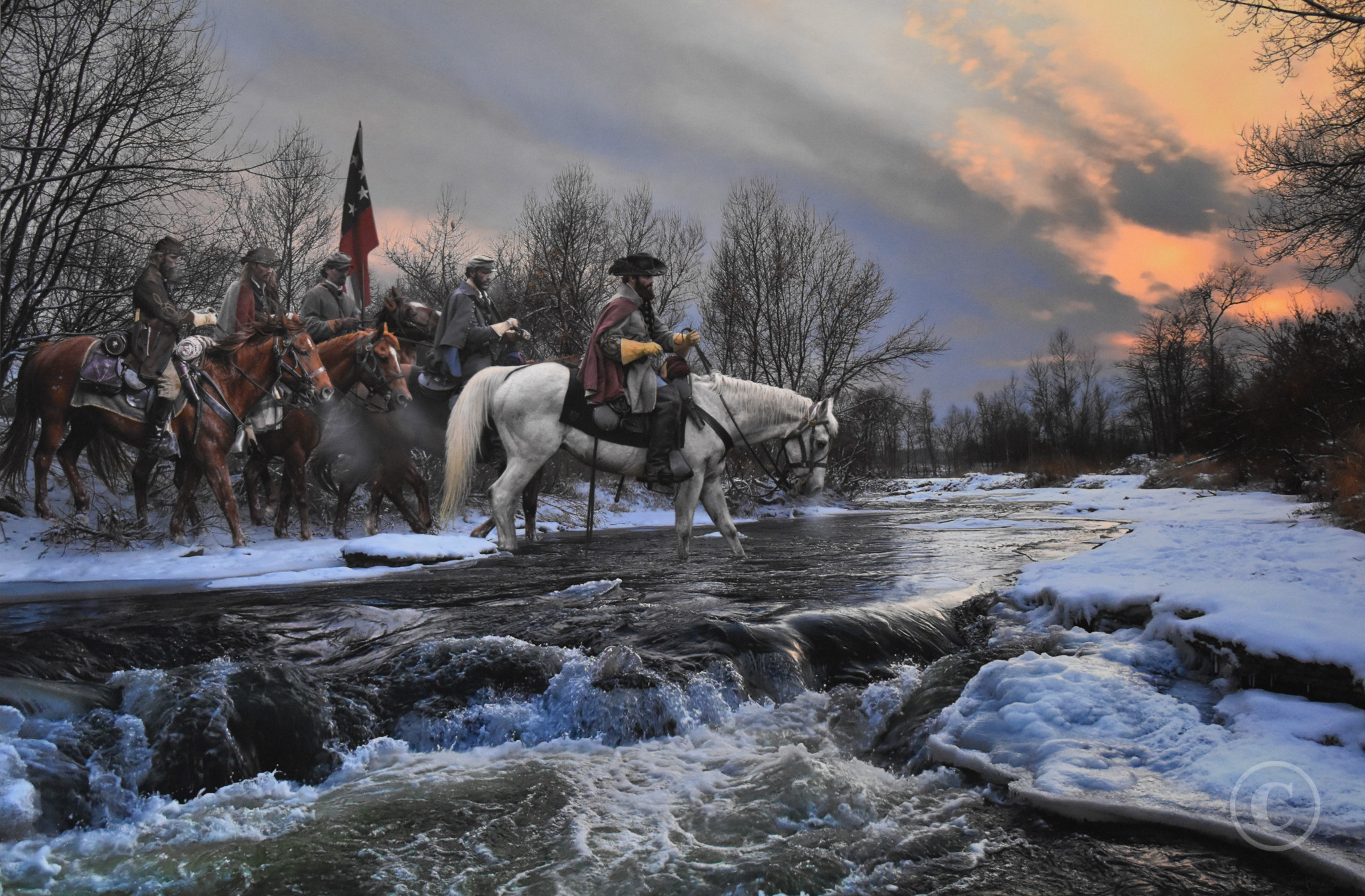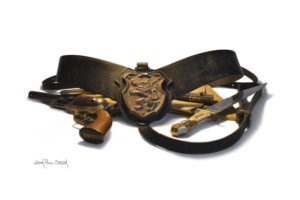EDINBURG AMBUSHCol. Turner Ashby, Major O.R. Funsten, Captain Daniel Hatcher & Lt. ThrasherStony Creek - Edinburg, Virginia - March 1862 
On the moonlit nights of February and March of 1862, federal soldiers described seeing a ghostly figure on a white horse moving along the hilltops and ridges of the Shenandoah Mountains. The ghostly figure was Colonel Turner Ashby on his white stallion, marking federal positions through the trees. Union officers constantly worried about Ashby’s cavalry, and a possible attack at any moment. Ashby’s mantle of mystery created fear in their ranks. Turner Ashby was known as the most accomplished horseman in the Confederacy. He was raised in the Shenandoah Valley and became an expert rider and trainer of horses. In those peaceful pre war days, Turner won many riding tournaments in Virginia. In these contests he often used the title, "Knight of the Black Prince.” It was said he rode two of the best horses of the army. His favorite was a huge white stallion named “Tom Telegraph” the other a dark stallion named "Gallant Gray.” In 1861 the charismatic Ashby organized his friends and family members into a militia cavalry company who became known as the “Mountain Rangers.” These young men were highly skilled horsemen and expert pistol marksmen. When the war began the Mountain Rangers officially became Company A of the 7th Virginia Cavalry, later known as part of the “Laurel Brigade.” At Harpers Ferry, the unit was placed under the command of Colonel Thomas J. “Stonewall” Jackson, and began honing their unit fighting skills against the federal army. On July 23, 1861 Ashby was promoted to Lt. Col. of the 7th Virginia Cavalry. By early 1862 the Laurel Brigade had reached an enormous size of 27 infantry and cavalry companies. Ashby was promoted to the rank of full colonel on February 12, 1862. On the 25th of February the federal army under the command of Maj. Gen. Nathaniel P. Banks crossed the Potomac River at Harpers Ferry and advanced towards Winchester and General Stonewall Jackson’s army. General Banks was supported by General James Shields division. As the federal force of over 30,000 men slowly approached Winchester, the town was evacuated by Jackson on March 11th. While Jackson’s army of 17,000 moved south, Col. Ashby when to work protecting the rear, skirmishing constantly with the federal vanguard. Ashby and his cavalry were continuously seeking points of attack, with audacious bold surprise attacks, leaving the federals in a state of anxiety and fear as to what General Jackson had in store. Ashby was a master of asymmetric warfare, using the valley’s terrain to his advantage. At Fisher’s Hill, his men quietly hid in thick woods and waited until the federals passed, then rushed upon them from the rear. At Stony Creek near Edinburg, Ashby’s men swooped down from concealment capturing many prisoners as others fled in panic. A federal officer described Ashby’s cavalrymen as "leaping over fences like deer." Historians credit Ashby with 26 ambushes against Union forces during this time. When attacking the larger federal force, it was the Laurel Brigade's Captain R.P. Chew’s Battery keeping the enemy at bay. Another federal officer in Bank’s army said he had learned to look for Ashby’s shells as regularly as he did for breakfast. On the 21st, while Ashby was skirmishing with the federals between Edinburg, Woodstock, and Strasburg, the federal army began to retreat north. Banks had received orders to bring his army back. But now the tables were turned, and Stonewall Jackson was in pursuit. Ashby’s ambushes played a crucial role in slowing General Bank’s advance into the valley and covering General Jackson’s movements. Colonel Ashby’s aggressive, and independent actions earned him a legendary reputation as the Black Knight of the Confederacy. Archival Paper Giclées
Canvas Giclées
|


